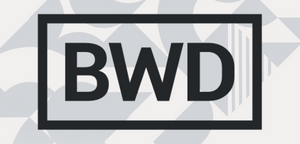Want to find out how to use LinkedIn to kickstart your graduate career? The importance of managing your online presence is well documented. And the chances are your Facebook and Instagram accounts are already set to private and your Twitter account work-friendly (and even relevant to the job you are applying for).
However, social media can also brighten your career outlook. LinkedIn, the world’s largest professional network, is a prime example of this. The social networking platform provides users with a variety of tools to improve their professional prospects. Alongside entry-level concepts like ‘creating an online CV’ and expanding your network, LinkedIn offers several lesser-known functions to help you maximise your career potential.
So, what are they? And how can you use LinkedIn to kickstart your graduate career? In this article, we look at how to get the most out of your LinkedIn profile.
How do I create a good LinkedIn profile?
First things first: you have to get your profile up to scratch. This enables you to chronicle your work history, education and skills. Think of this as your online CV, and you wouldn’t submit a half-finished CV.
LinkedIn assesses your ‘profile strength’ in terms of the amount of content you add, which can have some bearing on your ranking within the site’s search results. The more information you add the more likely employers are to find you. A well-rounded profile also adds substance to your personal brand, which is really what you are trying to build by having a LinkedIn profile.
You should fill out your work experience and education the same way you would your CV, highlighting any notable achievements. If you have previously had a job and received a promotion, treat this as two different roles as you will have had different responsibilities and also had different achievements.
The summary section of your profile is a great place to let people know your strengths and your professional ambitions. While this is similar to the summary on your CV, it does differ. The summary on your CV targets one specific job, while your LinkedIn summary should reach a broad audience. Talk briefly about your experience and what you consider to be your main strengths. You can then talk about where you see yourself in the future. While you need to keep the content broad, you need to be concise. Avoid waffling otherwise employers won’t scroll further.
Though you have already mentioned your skills and your strengths, you should list them under the ‘Skills & Endorsements’ as well. Your connections can then ‘endorse’ you, which means that they know you have that skill. Essentially, it’s a great way of validating your skills and expertise. You can also reciprocate, and endorse people you may have worked with either in past roles or at university.
So those are the basics. There are then some additional features that allow you to make an even stronger profile. If you have had any work published, such as essays or articles, or even if you keep a blog, you can list these under the ‘Publications’ section. The ‘Languages’ section is pretty self-explanatory and it is strongly encouraged to list any languages that you speak here.
If you have a presentation or a project that you are particularly proud of, you can upload this under the ‘Projects’ section, and if you were championed for this work then you can say so in the ‘Honours & Awards’ section.
You can include as much or as little information as you like in these sections, but the more you include the stronger your personal brand becomes.
How do I network on LinkedIn?
One of the great things about LinkedIn is that you can network without putting your shoes on. In fact, you can network in your pyjamas while eating toast if you really want. That said, LinkedIn should not substitute real-life networking and we do encourage you go to networking events if you can.
Anyway, you can start building your professional network by connecting with colleagues, friends and family.
If you are feeling really proactive, then you should consider connecting with staff you have met at Careers Fairs, Networking Events or Insight Days. If you do not know this contact directly (as in, they are not your best friend or your Uncle) you should personalise your connection request. Explain why you want to connect and, if you feel it necessary, reminding them when and where you met.
Don’t forget to update your status with relevant industry news and stories to show your passion. This is also a good way to remind connections who you are and what you are looking for. If people get in contact with you, always reply by sending a comment or an email saying thank you.
How can I find a job on LinkedIn?
LinkedIn offers the potential for work opportunities to find you, but it’s not a promise.
You will find relevant vacancies listed under the Jobs tab, but it can be worth taking charge by visiting the pages of the companies you wish to work for. By setting up a company page, employers equip themselves with a free platform to advertise their current vacancies. This is particularly popular with SME’s who have lower budgets for recruitment.
You can also utilise your network to create your own opportunities. For example, you may discover that someone in your network currently works for your preferred employer, or at the very least put you in touch with someone who does.
That being said, LinkedIn should be treated as a way of complimenting your wider efforts to secure a graduate job. It should not replace the considerable value of university career centres and graduate job boards.
What research can I do on LinkedIn?
LinkedIn can also be a great way to research prospective companies.
Following a company will demonstrate your interest in them, and keeping tabs on the updates they post will further impress recruiters in the application and interview process.
There are additional ways to prove your interest in a particular industry or profession. Joining a group does just that, and at the same time affords you the chance to participate in discussions, keep up to date on noteworthy industry developments, and even see more opportunities.
Hopefully this has given you some idea of how best to use LinkedIn to kick start your graduate career. Just as employers utilise the platform as free means of promotion, make use of LinkedIn to sell yourself on the strength of your personal brand. And if employers don’t come knocking, all the tools are there for you to create your own opportunities.





